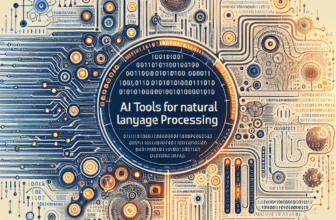
[ad_1]
In the digital age, content moderation has become a critical task for businesses and online communities. As the volume of user-generated content on websites, social media platforms, and forums continues to explode, it’s become increasingly challenging to manage and maintain quality manually. Thankfully, advancements in artificial intelligence (AI) have led to the development of powerful tools that can help in automating and improving the accuracy of content moderation tasks. Here, we explore five leading AI tools that are redefining content moderation, helping organizations ensure safer, more compliant online environments.
1. Perspective API by Google
Perspective API is developed by Google’s Jigsaw unit. It uses machine learning models to identify and mitigate toxic comments and behavior online. This tool is pivotal for platforms that struggle with large volumes of user comments and need to maintain a positive, respectful conversation. The API scores comments based on their perceived impact, helping moderators understand which comments may be most harmful or disruptive. It’s particularly useful for news outlets and social platforms energetically tackling harassment and verbal abuse.
2. Microsoft Azure Content Moderator
Microsoft Azure Content Moderator is part of Microsoft’s Cognitive Services suite, offering robust moderation capabilities that extend beyond just text analysis. This tool can also handle image and video moderation, detecting potentially offensive or unwanted material using machine learning. Azure Content Moderator provides features like text moderation, image moderation, face detection, and even Optical Character Recognition (OCR) to extract text from images. This wide range of capabilities makes it suitable for platforms that host diverse content formats needing rigorous moderation.
3. OpenAI’s GPT-3 for Contextual Moderation
While not solely a moderation tool, OpenAI’s GPT-3 has the capability to be tailored for content moderation purposes. GPT-3 is an advanced language generation model that understands and generates human-like text based on the input it receives. When configured for moderation, GPT-3 can assist in understanding the context of conversations, making it an invaluable tool for platforms where nuances and context are crucial — such as in forums discussing sensitive topics. Although access to GPT-3 might require more setup compared to other out-of-the-box moderation tools, it offers unmatched flexibility in handling complex, nuanced interactions.
4. Besedo Implio
Besedo Implio is designed specifically for automating the moderation of user-generated content on platforms like marketplaces, dating sites, and share-economy services. It combines AI with manual moderation tools, providing a versatile solution that can be customized to specific needs. Implio excels in its ability to filter, automate, and report content that violates specific guidelines tailored to a particular community or marketplace. This tool is ideal for businesses that need a clear, precise moderation setup that aligns with its user policies and community standards.
5. Hive Moderation
Hive Moderation offers a comprehensive content moderation solution that uses AI to automatically detect unsafe or inappropriate content across various media types. It is capable of moderating text, images, and videos in real-time, which significantly reduces the workload on human moderators and increases moderation efficiency. Hive’s technology is continually learning from new data, which enables it to stay updated with the latest content trends and potential threats, making it effective for platforms that are frequently targeted by varying forms of spam or harmful content.
The Importance of Combining AI with Human Oversight
While AI tools offer significant advantages in speed and scalability, they are not foolproof. AI models can still struggle with understanding context and subtlety in the same way a human can. Therefore, the most effective content moderation strategies often involve a combination of AI and human oversight.
AI can handle the bulk of straightforward decisions — such as filtering out clear-cut cases of harassment or detecting explicit images. Human moderators can then focus on more nuanced decisions, or review content flagged by AI as potentially problematic. This hybrid approach helps balance efficiency with accuracy, ensuring that content moderation is robust, fair, and respectful of context.
Conclusion
As the digital realm expands and evolves, the demand for effective content moderation solutions will only increase. AI tools like Perspective API, Microsoft Azure Content Moderator, OpenAI’s GPT-3, Besedo Implio, and Hive Moderation, are at the forefront of tackling this challenge. They offer varying capabilities that cater to different types of content and platforms, ensuring safer online environments.
Organizations and platform owners must consider their specific needs and challenges when choosing among these tools. Furthermore, they should remain vigilant about integrating human judgment into their moderation processes to handle the nuances of human communication effectively. By doing so, they can create and maintain online spaces that are not only clean and compliant but also respectful and welcoming.
[ad_2]







